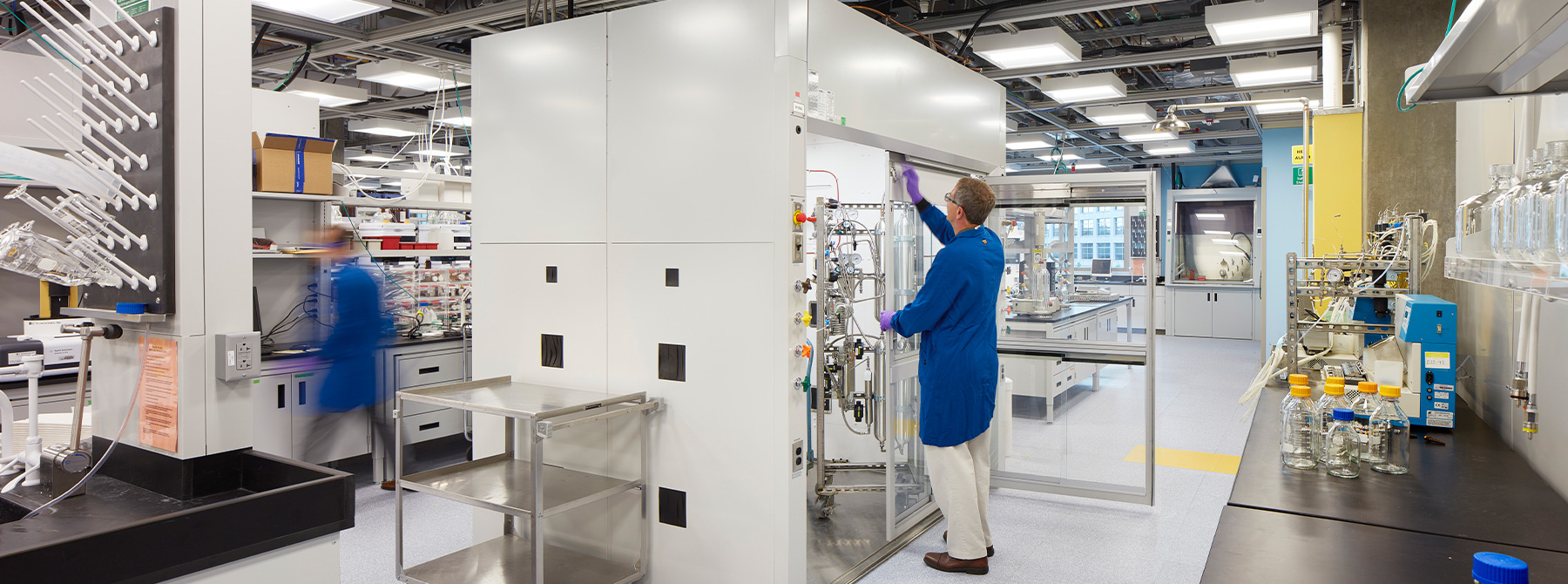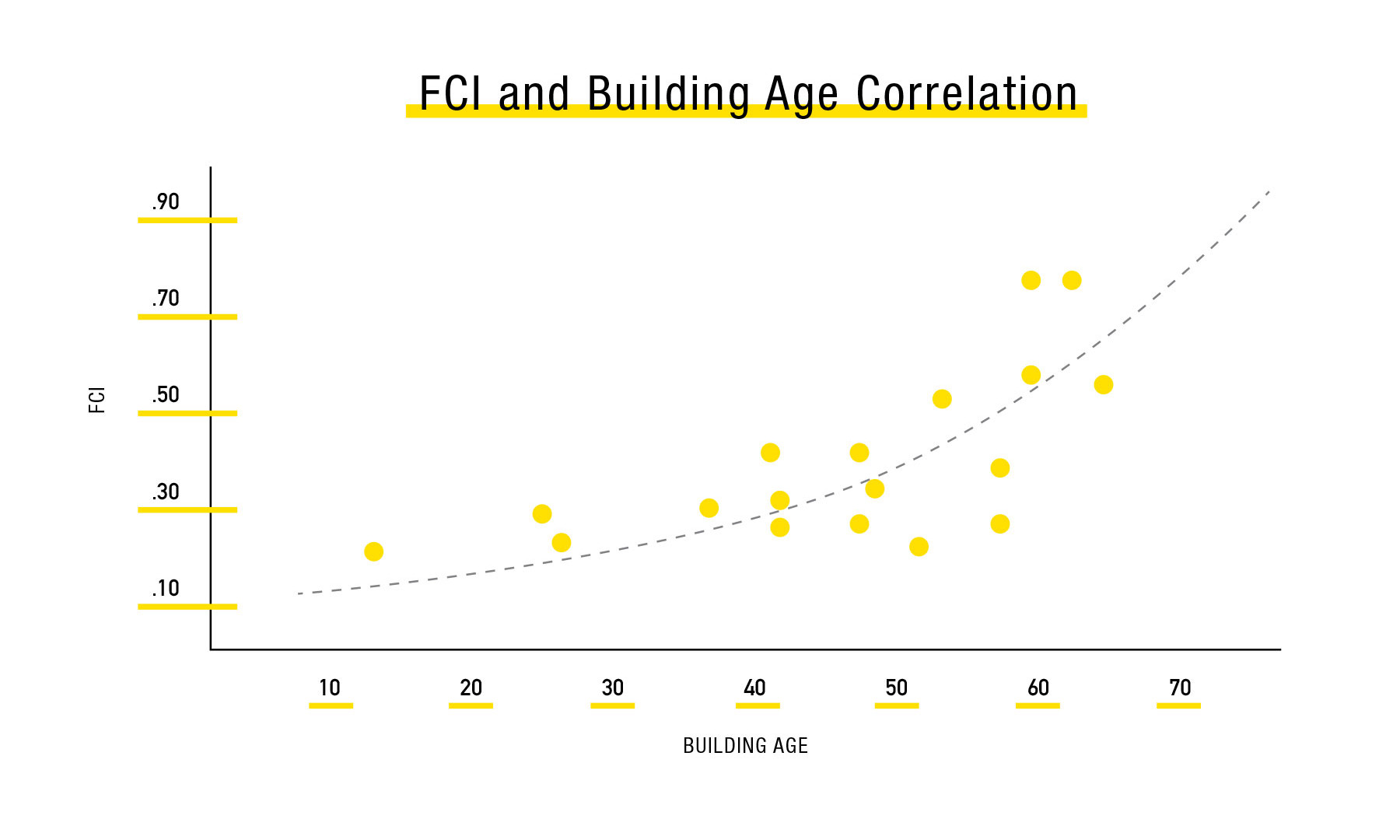Predicting the Useful Life of Laboratory Buildings

Owners often ask us when they should replace an existing building instead of renovating it. This is a hard question, because many buildings are difficult to replace, dear to the owner, or of historic value – and often it is possible to renovate it and extend its useful life.
Laboratories are a special case, because the technology that supports them has changed and scientists have new expectations regarding the performance of their most expensive space. Because laboratories are so costly to build and renovate, we optimize them and make them as flexible as possible, so they serve us as long as is feasibly possible.
Flad has utilized the Facility Condition Index (FCI) to evaluate building life cycles on large campuses to help owners understand the current value of their building assets. This condition index is based on a detailed assessment of the buildings and the estimated renovation costs to fix the identified issues. Renovation cost can then be compared to the cost of replacing a building. The FCI is a percentage of the cost of renovation over the cost of building new. If the renovation, for example, costs 50% of building new, the FCI would be 0.50.
The graphic shown here plots the FCI values of existing buildings related to the age of the building. You can see that the younger buildings show lower renovation costs and therefore lower FCI values. The dotted line is a trend that allows us to project future FCI values.

Experience has shown us that buildings with an FCI value of greater than 0.4 become almost impossible to renovate effectively, because the building structure often does not allow a renovation that provides quality, state-of-the-art laboratories and office space. In order to fully update the building, large structural interventions are necessary and the mechanical infrastructure needs to be replaced entirely. Fire protection issues will also force the designer to go beyond simple renovation measures.
In summary, what we have learned from these studies is that laboratories that are older than 40 years usually have renovation needs that exceed the 40% of replacement costs, as is shown in the graph. Older buildings on this graph that have an FCI of lower than 0.4 are usually office buildings, which can be renovated more efficiently.
Analyzing the age of the building and estimating the cost of renovation and replacement provides a very transparent evaluation to owners that helps them understand the condition of their buildings and decide how to move forward. As a benefit, this set of metrics also helps them understand if they are spending their money wisely. Only if they start a thoughtful renewal program will they actually observe an improved FCI in many of their buildings, instead of just making do with what they have.